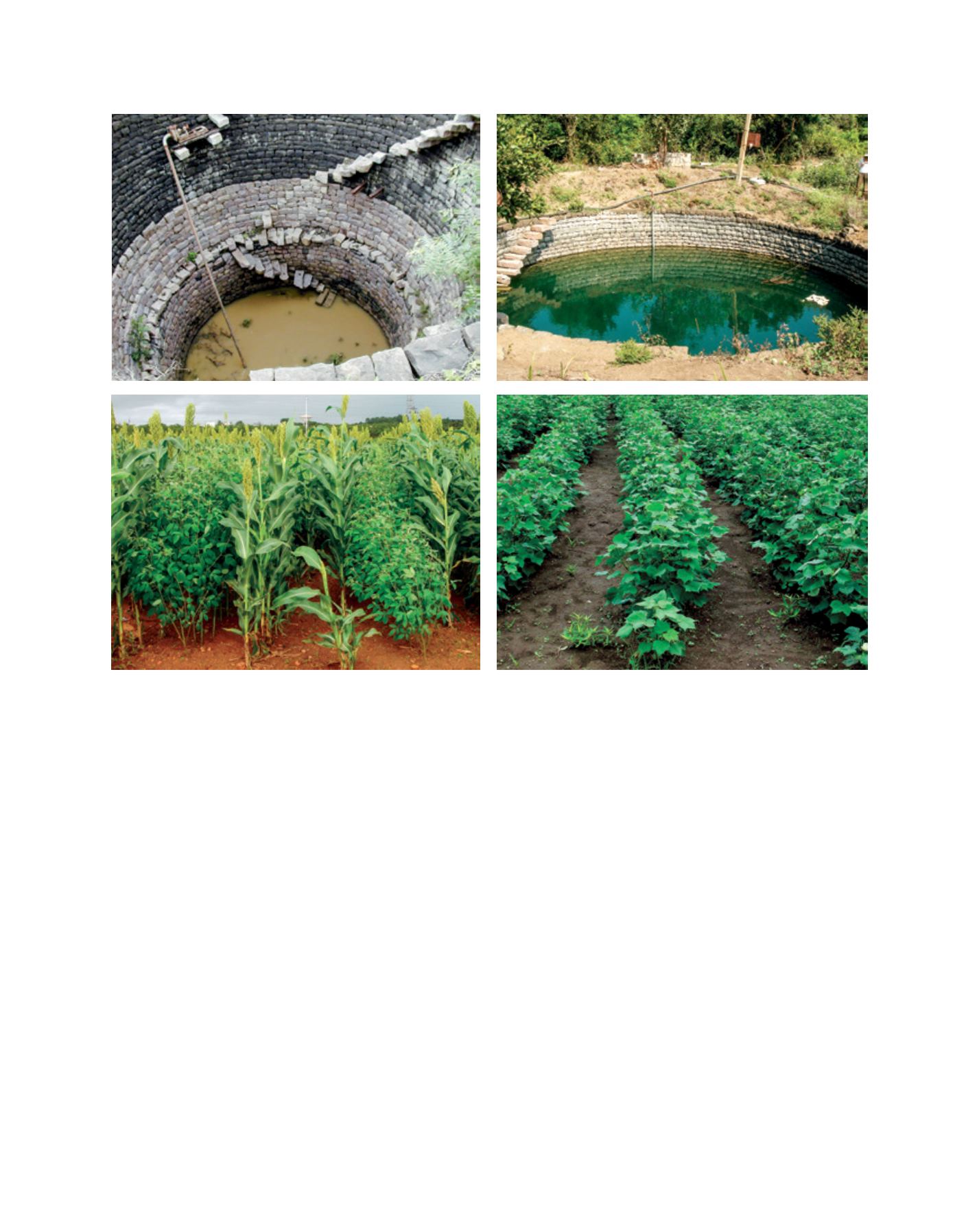

[
] 98
to 2.5 times (3,800 kg ha
-1
compared to 1,500 kg ha
-1
); inter-
cropped maize pigeonpea with improved management produced
6,000 kg ha
-1
compared to 2,900 kg ha
-1
; and pigeonpea yields
increased to 900 kg ha
-1
against 200 kg ha
-1
in 1998. Moreover
implementing such interventions has strengthened a number of
regulating and supporting ecosystem services such as reduced soil
loss (10 t ha
-1
to 2 t ha
-1
), reduced surface run-off (30-40 per cent),
increased base flow, improved water quality (pesticide residue-
free), increased green cover and carbon sequestration.
Parasai-Sindh, central India
The Parasai-Sindh watershed, comprising three villages cover-
ing 1,250 ha, was developed as a benchmark site in Jhansi
district of Bundelkhand, being a hot spot of water scarcity, land
degradation, poverty and vulnerability to the impacts of climate
change. This watershed receives nearly 850 mm of rainfall with
about 85 per cent from June to September. Agriculture and
allied sectors are the main sources of livelihood for the rural
people in this region who are largely dependent on groundwater
resources for domestic and agricultural use. Due to hard-rock
geology, groundwater recharge mainly takes place in shallow
and unconfined aquifer which is characterized by poor specific
yield. Water level in open/dug wells depletes very fast after the
monsoon and communities suffer fromwater scarcity especially
in summer. Women and girls were spending significant time
and energy collecting water for domestic use, while men would
migrate to nearby cities in search of livelihood during and after
the monsoon. This left women and livestock further exposed to
a number of socio-economic stresses and exploitation.
From 2012 onwards, ICRISAT along with national part-
ners, Central Agro-Forestry Research Institute (CAFRI),
district administration, government of Uttar Pradesh and local
community started implementing watershed interventions in
Parasai-Sindh watershed. Regular interactions with the commu-
nity contributed to a strong trust resulting in effective planning
and implementation of watershed activities. The village and
the watershed committees identified potential locations where
different soil and water conservation practices such as check
dams and gully control structures could be made.
Ex-situ
water harvesting structures together developed 125,000 m
3
of storage capacity by the end of June 2015. Through state-
of-the-art monitoring, it was estimated that these structures
harvested around 250,000 m
3
of surface runoff and facilitated
groundwater recharge in every monsoon season with the
groundwater table increasing on average by 2.5 m compared to
non-intervention stage. This has increased cropping intensity
Top: Post-monsoon water levels in one of the wells of Adarsha watershed, (left) before and (right) after the watershed intervention
Bottom: Farmers in the Adarsha watershed adopted intercropping as an improved management practice and many moved to high-value crops such as cotton
Images: ICRISAT
L
iving
L
and
















